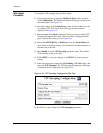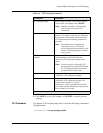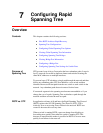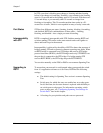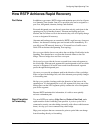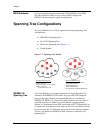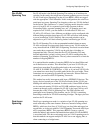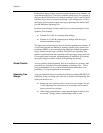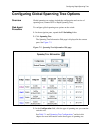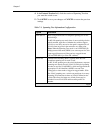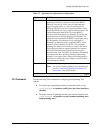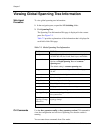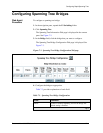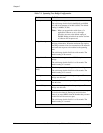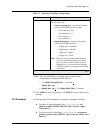
7-6 User Guide for the Avaya P580 and P882 Multiservice Switches, v6.1
Chapter 7
In this mode, legacy bridges remain in separate Spanning Tree domains, yet
loops between the layer 3 and legacy domains cannot form. For example; if
there are three P580 switches in a network running VLAN A and VLAN B,
and three legacy devices connect up through a port configured in VLAN A,
the legacy devices remain in their own legacy Spanning Tree and do NOT
join the Multilayer Spanning Tree.
In the previous example, all three multiservice switches participate in two
Spanning Tree domains:
■ Domain for VLAN A containing three bridges
■ Domain for VLAN B containing three bridges with the legacy
domain remaining separate.
The legacy devices need not be aware of the other spanning tree domains. If
a loop forms between the Multilayer domains and the legacy domain, the
proprietary BPDU is seen returning to the Multilayer domain through the
legacy domain and the loop is blocked. The Dual-Layer Spanning Tree
method is preferred when inter-operating with large legacy bridge networks.
Convergence time is reduced, and management is simplified, by allowing
the legacy bridges to remain in their own spanning tree domain
Global Disable You can globally disable Spanning Tree on all multiservice switches, thus
preventing any switch port from participating in Spanning Tree. This is
only recommended in a very controlled environment where there is no
possibility of a loop being placed in the network.
Spanning Tree
Design
Avaya recommends that you consider the following standard IEEE802.1D
Guidelines when you design your network, no matter which Spanning Tree
mode you decide to use:
■ Ensure that core switches can be forced to be root bridges. For per-
VLAN Spanning Tree, the function of root bridge can be shared
among several core switches
■ When using standard timers, ensure that the depth of the tree does
not exceed 7 bridges when a default bridge timer is used



